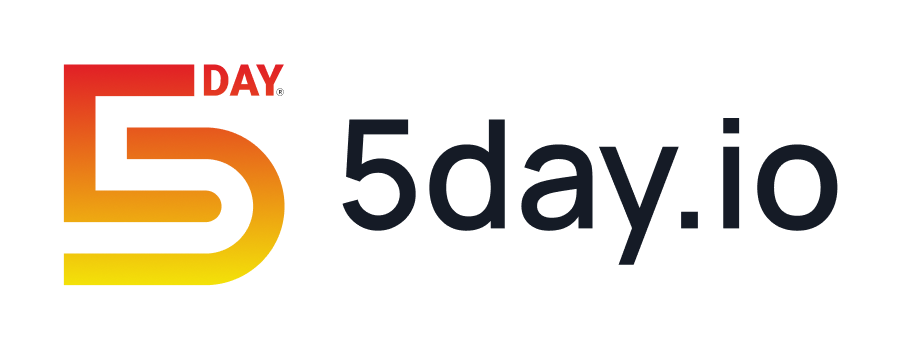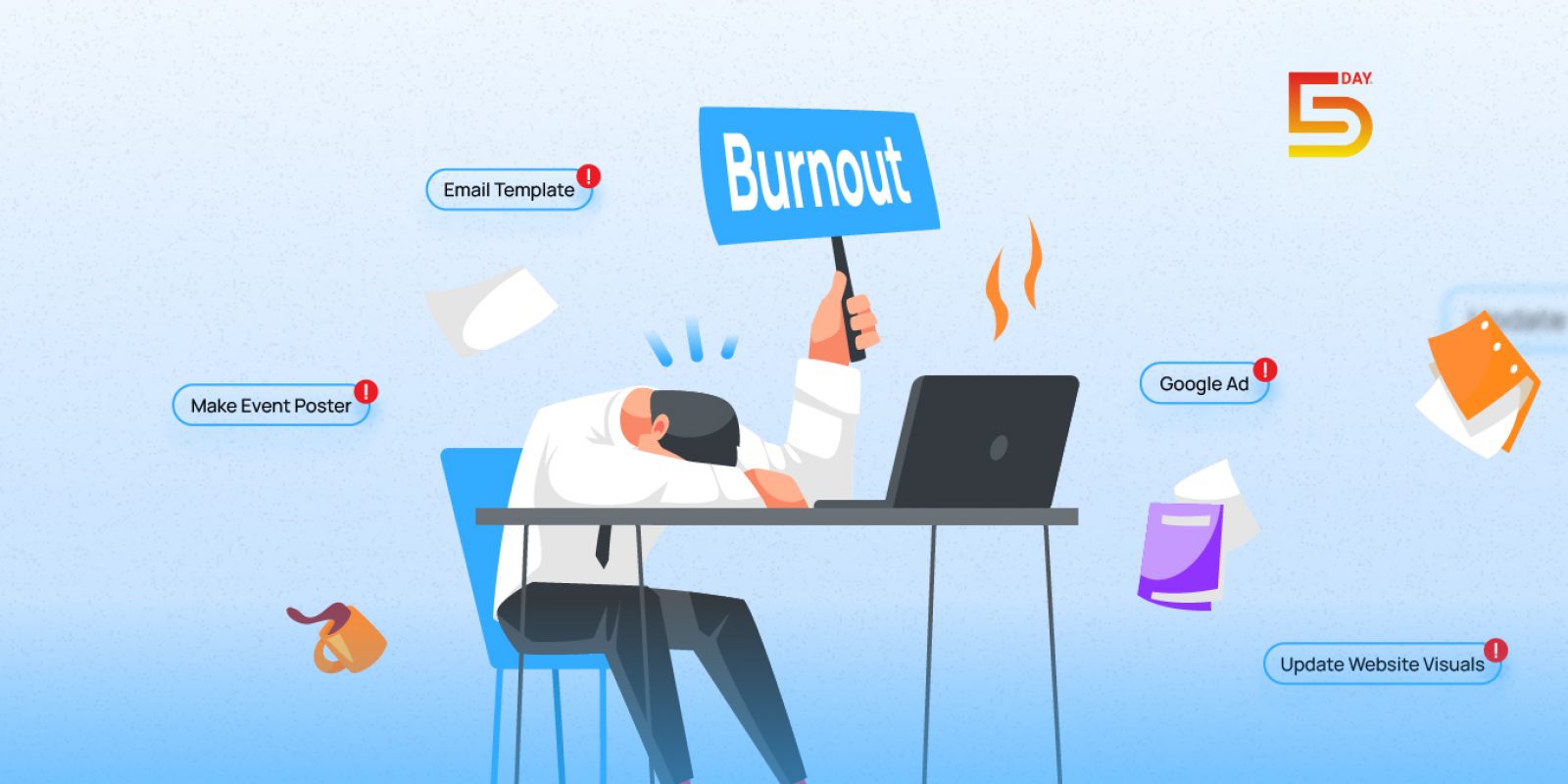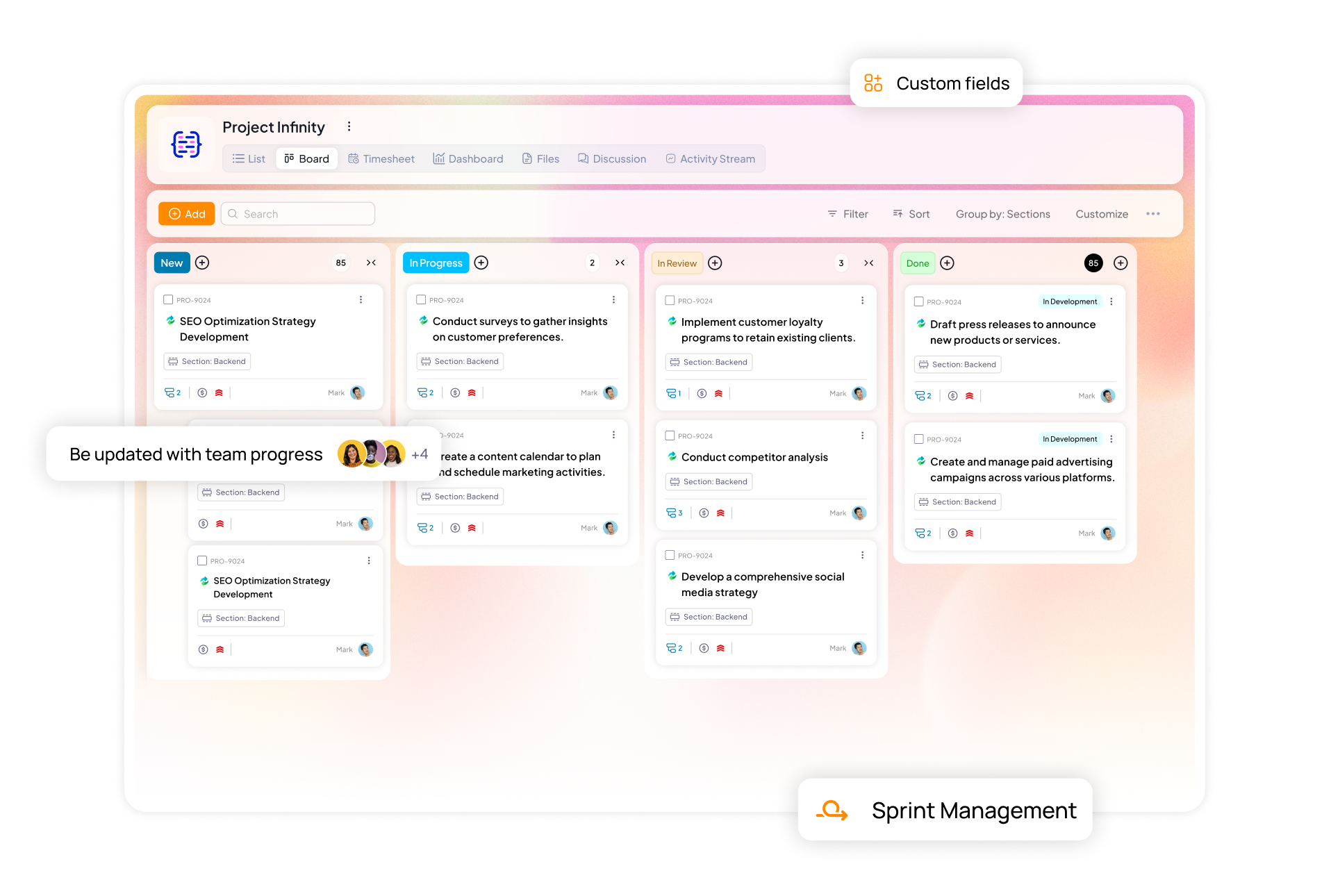Are your feature requests piling up? Release dates slipping and engineers burned out? This chaos sounds familiar, right? For product teams, how to choose project management methodology isn’t just a planning decision.
Agile sounds right, but is it scalable? Waterfall feels too rigid. Hybrid? Messy if not done well. This decision is what defines whether you achieve goals on time or stall mid-sprint.
In this guide, you’ll learn real-world use cases and how to choose a methodology that keeps the project process aligned for success.
Before jumping to the steps to choose the best methodology, let’s first discuss—what is a project management methodology.
Understanding project management methodologies
A project management methodology is more than a set of steps. It’s a structured framework of principles and best practices that transforms raw ideas into completed deliverables.
At its core, methodology defines how a team plans, executes, monitors, and closes work. There are a few tried-and-true methodologies like Waterfall, Agile, Scrum, Kanban, etc.
But why do methodologies matter so much? Because no two projects are alike. A software development team thrives on flexibility, while a construction firm relies on strict timelines.
Let’s look at different types of project management methodologies one by one to discover the best suited for your project.
Overview of popular methodologies
Knowing which project management methodology to use for your project can mean the difference between confusion and consistency. Here is a list of the project management approaches to help your team move fast and finish strong.
1. Waterfall (Traditional Approach)
Waterfall follows a linear, phase-by-phase process. In this, teams plan everything upfront and complete each stage before moving to the next.
This is the best project management methodology for teams with a well-defined project scope, fixed requirements, and little room for change. It works well for construction, manufacturing, and infrastructure projects.
Why teams choose it:
- You get a clear timeline and budget from day one
- Roles and responsibilities are defined early
- Ideal when regulatory compliance or detailed documentation is key
Limitations:
- Doesn’t handle late-stage changes well
- Stakeholders see the result late in the process
2. Agile (Flexible & iterative)
Agile project management delivers work in short, iterative cycles (sprints), with constant feedback and room to pivot based on what’s learned. It suits projects that evolve quickly. Use Agile best practices for software development, product teams, or anything with fast-moving parts.
Why teams choose it:
- Stakeholders stay involved throughout
- A working product is delivered early and often
- Teams can shift priorities mid-project without chaos
Limitations:
- Requires close collaboration and discipline
- It can get messy without a strong product owner or backlog manager
Pro tip: Compared to Watertfall, Agile works well for projects with uncertainty. If your roadmap changes monthly, this is your safety net.
3. Scrum (Agile, with structure)
Scrum builds on Agile principles with specific ceremonies (daily standups, sprint planning, retrospectives) and clearly defined roles. It is best for small, cross-functional teams delivering software or digital services in sprints.
Why teams choose it:
- Improves team velocity and predictability
- Short feedback loops reduce wasted effort
- Teams build better habits over time
Limitations:
- Needs a consistent rhythm, which is hard to maintain in chaotic organizations
- Not ideal for large, multi-team projects without scaling
4. Kanban (Visual workflow management)
![]()
Allows you to visualize work using boards, limit how much is in progress, and focus on flow over deadlines. This methodology works well for teams managing continuous workflows, like support desks, marketing operations, content production, or even HR.
Why teams choose it:
- Great for surfacing bottlenecks early
- Minimal setup, easy to adopt
- Flexible across industries
Limitations:
- No built-in deadlines, as it can drift without discipline
- Lacks the cadence and role clarity of Scrum
5. Hybrid (Combining Agile & Waterfall)
Hybrid combines Waterfall’s upfront planning with Agile’s sprint-based execution. Often used when different phases of a project need different levels of control. Teams that need both structure and adaptability can find this beneficial. A hybrid is commonly used in finance, healthcare, or client service environments.
Why teams choose it:
- Keeps clients and execs happy with plans and timelines
- Gives teams autonomy within delivery cycles
- Bridges traditional and Agile mindsets
Limitations:
- It can be hard to implement without strong process ownership
- Teams may clash if expectations aren’t aligned
Pro tip: Don’t want to commit fully to Waterfall or Agile? Start with the Hybrid methodology and adjust as you scale.
6. SAFe (Scaled Agile Framework)
SAFe applies Agile principles at an organizational level, using Agile Release Trains (ARTs), synchronized sprints, and layered planning (team, program, portfolio). It works best for enterprises or multi-team organizations that want to scale Agile across departments.
Why teams choose it:
- Brings structure and alignment to large Agile programs
- Improves visibility across product lines
- Reduces chaos in cross-functional execution
Limitations:
- Complex setup and requires training and buy-in
- It can feel heavy if not tailored to your context
Pro tip: If your organization is Agile in name but chaotic in practice, this gives you the blueprint to scale smartly.
Factors to consider when choosing a project management methodology
Multiple factors can help decide which project management methodology is right for your team. Here’s a breakdown of the top considerations.
1. Budget
Your budget drives everything from project management software subscriptions to training and process management. Think about how much you can invest in the project to maintain the selected approach without breaking the bank.
2. Team size and skills
Is your team a lean squad of specialists or a larger cross-functional group? Match the methodology to your people’s experience and comfort level. Your biggest gains come when your team’s skills and the process play to each other’s strengths.
3. Project complexity
Some projects are straightforward, while others involve tangled dependencies or evolving requirements. If you’re tackling a simple, well-defined brief, a linear approach like Waterfall might shine. For complex, uncertainty-heavy work, lean into Agile or a hybrid model.
4. Timeline
Are you racing against the clock, or can you afford to perfect every detail? Quick turnarounds call for iterative methods that deliver in chunks, while open-ended timelines might benefit from a more deliberate, phase-gate approach.
5. Flexibility vs predictability
How much rigidity or flexibility do you need? If requirements rarely change, you’ll appreciate the predictability of a plan-driven method. If you expect pivots, opt for Agile frameworks that embrace change without derailing progress.
6. Collaboration and stakeholder engagement
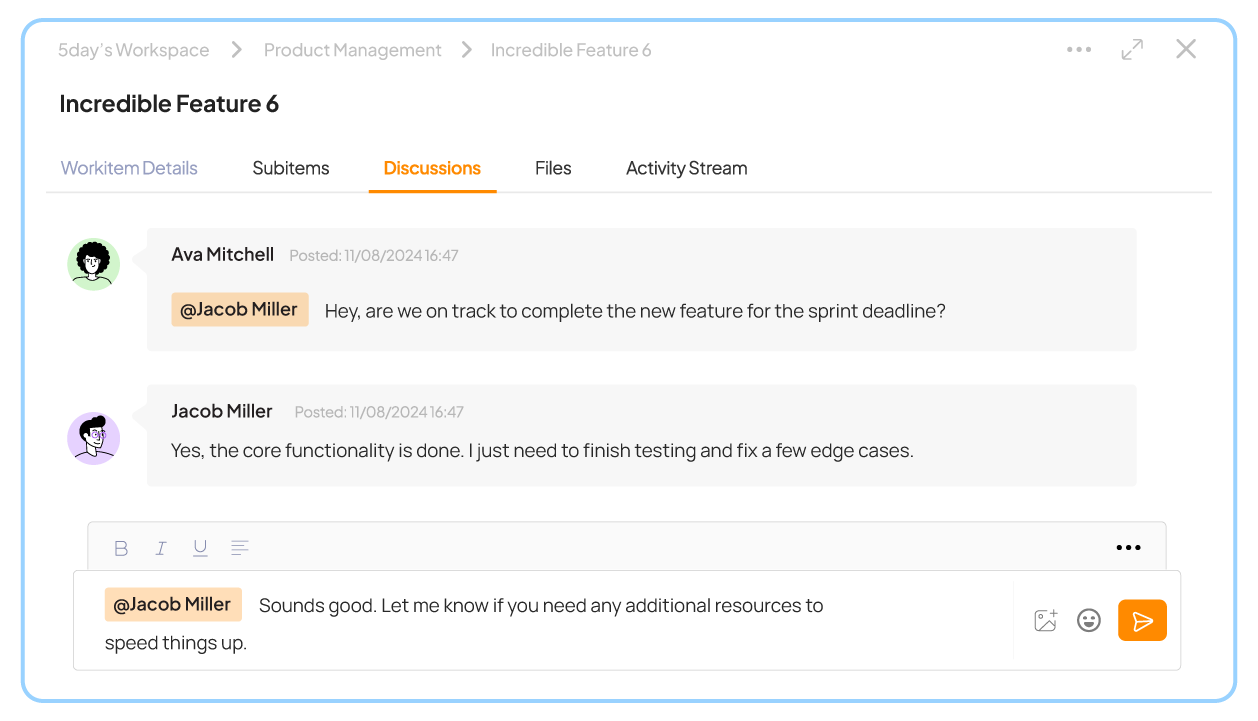
Do you need constant client check-ins, or is a final sign-off enough? Agile methods shine when you need regular feedback loops. On the other hand, rigid frameworks work when collaboration happens at key milestones.
Pro Tip: Write these factors on a whiteboard, rank them by importance, and use the results to guide your first methodology choice. It’s a quick way to get everyone on the same page.
Comparative analysis: Which methodology fits your project?
Let’s simplify your decision. Here’s a side-by-side project management methodology comparison to help you choose what fits your team.
| Factor | Waterfall | Agile | Scrum | Kanban | Hybrid | SAFe |
|---|---|---|---|---|---|---|
| Flexibility | Low | High | High | Medium | Medium | Medium-High |
| Documentation | High | Low | Medium | Low | Medium | High (esp. in scaled organizations) |
| Team size | Large | Small | Small-Medium | Any | Any | Medium–Large (multi-team setup) |
| Risk handling | Predictable | Adaptive | Adaptive | Reactive | Balanced | Structured but change-tolerant |
| Collaboration | Low | High | High | Medium | High | High (cross-team alignment) |
| Best For | Construction, infrastructure | Software, startups | Product, SaaS teams | Support, operations, content teams | Regulated, hybrid teams | Enterprise-scale Agile |
Step-by-step guide to selecting the right methodology
From the factors above, it’s clear that no single methodology fits every project. To land on the right framework for your team, follow the steps below.
1. Consider the project
Start by defining the end goal and gathering initial requirements. If your deliverable is well-defined, think compliance-heavy builds. Similarly, for fixed-scope launches, a structured approach like Waterfall can work wonders.
For ambiguous or evolving targets, common in in-house R&D projects, lean into Agile’s iterative cycles. Consider your budget, timeline, complexity, and industry guidelines for this assessment.
2. Evaluate your team
Your chosen methodology serves as a blueprint, so ensure your team can easily read it. If your squad is already fluent in Scrum ceremonies, dive into sprint-based workflows. If they thrive on visual workflows and WIP limits, Kanban may be a better fit.
Newer teams or those learning on the go might prefer a lightweight framework that ramps up gradually, like Scrumban (Scrum and Kanban combined) or Lean.
3. Identify your organization structure
Organizational culture and structure can make or break a methodology rollout. Large enterprises with rigid hierarchies may struggle with fully Agile models, whereas start-ups often find strict phase gates cumbersome.
Review past projects and see if your Agile pilots hit roadblocks. In that case, it’s better to blend in more predictability with a hybrid model. Match the maturity level and resource availability to your approach.
4. Learn about the stakeholders
How hands-on are your sponsors and clients? Agile thrives on continuous feedback loops, so if stakeholders can’t dedicate time to sprint reviews, consider a methodology with scheduled milestone approvals.
If scope creep is a norm, prioritize frameworks that allow change without interrupting progress. A time-boxed Agile approach or a controlled waterfall with change control boards suits the best here.
5. Find the right tools
Choose a project management software toolbox that enables, and not frustrates, your process. List your current project management tools and audit their strengths and gaps against your selected methodology.
For example, if you choose Kanban, confirm your platform supports WIP limits and swimlane customization. If you opt for Waterfall, look for robust Gantt and dependency management. Wherever possible, use project management tool like 5day.io that help you toggle views, like hybrid boards with timeline and list modes, to future-proof your setup.
Case studies illustrating successful methodology selection
Case study #1: How Cisco used SAFe to cut defects and overwork
Challenge
Cisco’s Subscription Billing Platform was suffering. The team was shipping late, firefighting bugs, and dealing with overwhelmed developers. A traditional Waterfall approach that couldn’t keep pace with growing business needs was the main problem.
The switch
Cisco adopted the Scaled Agile Framework (SAFe). They restructured into Agile Release Trains, introduced daily standups, and put feedback loops in place across departments.
What changed
- 40% reduction in critical and major defects
- No more weekend crunches, teams started shipping on time, without overtime
- Clearer ownership and delivery cycles across a large organization
Takeaway: When complexity scales, so should your process. Cisco’s story shows how Agile at scale can bring back control, quality, and sanity.
Case study #2: Mayden’s shift from Waterfall to Scrum
Challenge
Mayden, a UK-based health tech company, was building software for mental health services. But their old Waterfall-style process was creating friction, like long delays, limited visibility, and clunky client handoffs.
The switch
They adopted Scrum and empowered dev teams to self-organize. Instead of waiting months to review work, stakeholders were looped in every two weeks.
What changed:
- Faster delivery of new features
- Higher developer engagement
- Continuous feedback → better product-market fit
- Happier clients who felt heard
Takeaway: If your clients or users are deeply involved, Scrum brings their voice into every sprint and helps your team course-correct in real time.
How 5day.io supports project management methodologies
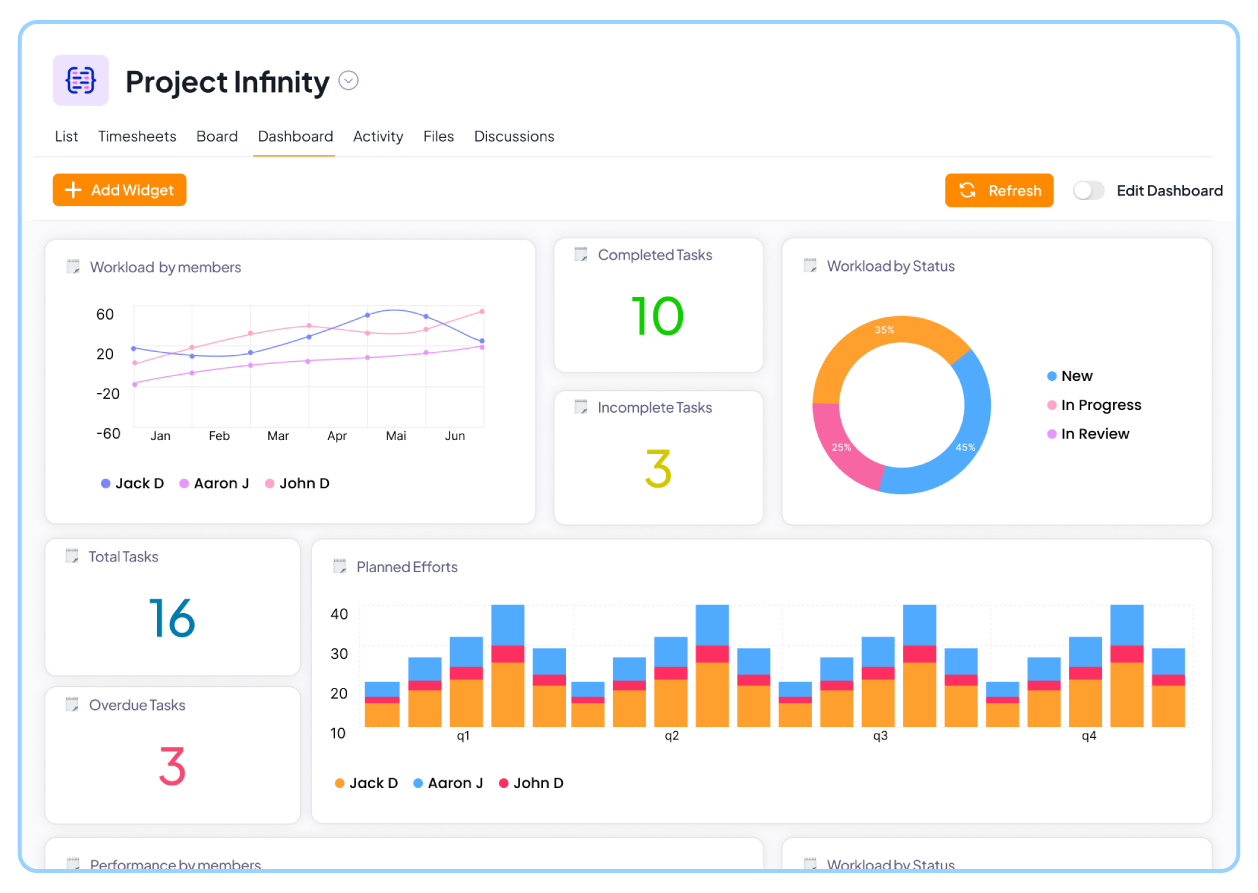
Following the above steps and tips will help find the best project management methodologies. But many projects fail to deliver on time and on budget.
That’s why you need tools that support the entire process. Your team might align perfectly on Agile or Hybrid on paper, but without a system to put it into practice, even the best methodology falls apart.
That’s where 5day.io makes a real difference.
When running structured sprints or managing a linear delivery pipeline, 5day.io lets you:
- Build workflows that reflect your chosen methodology, using sprint board views to fully customize workflows.
- Switch between Kanban and list views so everyone can choose the view that works for them without disrupting the entire team’s rhythm.
- Assign roles and owners, define project dependencies, and map priorities at every stage of your methodology.
- Keep everyone aligned, from project managers to clients, with @tag comments, approvals, and real-time updates.
- Track progress your way, with story points, time estimates, and auto-updating progress metrics.
- Evaluate and iterate, using integrated timesheets and estimation vs actual performance dashboards.
Choosing a methodology is a strategic decision. But executing it across departments and people requires more than strategy. You need structure and flexibility, which is possible with a platform like 5day.io.
Want to turn your project methodology into repeatable, successful delivery frameworks? Try 5day.io
Frequently asked questions
What is the difference between a project framework and methodology?
A framework offers a high-level overview of guidelines and principles, giving teams the flexibility to adapt tools and practices creatively based on context. In contrast, a methodology provides a detailed set of rules and steps to follow, leaving little room for deviation.
But what matters most isn’t the label, but how well your chosen approach is. Choose the one that aligns with your project’s unique complexity and organizational culture.
Which project management methodology is best for flexible requirements?
When your project requirements are highly flexible, change-driven methodologies, like Agile, Kanban, and Scrum, perform best.
Kanban offers continuous delivery with visual workflow boards that adapt to shifting priorities. On the other hand, Scrum provides structured sprints and review cycles, allowing teams to pivot every 1–4 weeks. Pairing these methodologies with a platform like 5day.io ensures you can adjust the scope and update priorities in minutes without losing visibility or control.
How to ensure the successful implementation of the chosen methodology?
Project managers can set their selected methodology for success by combining clear communication and ongoing feedback.
Start by getting leadership on board and clearly explain ‘why’ and ‘how’ to everyone involved. Equip your team with hands-on training and appoint ‘process champions’ as go-to experts.
Use regular check-ins to track simple metrics and hold quick retrospectives. This ensures you spot blockers in time and tweak the process.
